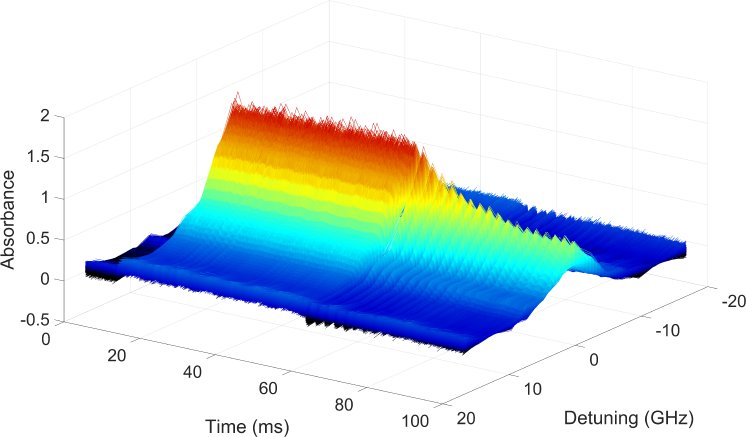From monitoring concentrations of greenhouse gases to detecting COVID in the breath, laser systems known as frequency combs can identify specific molecules as simple as carbon dioxide and as complex as monoclonal antibodies with unprecedented accuracy and sensitivity. Amazing as they are, however, frequency combs have been limited in how fast they can capture a high-speed process such as hypersonic propulsion or the folding of proteins into their final three-dimensional shapes.
Now, researchers at the National Institute of Standards and Technology (NIST), TOPTICA Photonics AG and the University of Colorado Boulder have developed a frequency comb system that can detect the presence of specific molecules in a sample every 20 nanoseconds, or billionths of a second. With this new capability, researchers can potentially use frequency combs to better understand the split-second intermediate steps in fast-moving processes ranging from the workings of hypersonic jet engines to the chemical reactions between enzymes that regulate cell growth. The research team announced its results in a paper published in Nature Photonics.
In their experiment, the researchers used the now-common dual-frequency comb setup, which contains two laser beams that work together to detect the spectrum of colors that a molecule absorbs. Most dual-frequency comb setups involve two femtosecond lasers, which send out a pair of ultrafast pulses in lockstep.
In this new experiment, the researchers used a simpler and cheaper setup known as “electro-optic combs,” in which a single continuous beam of light first gets split into two beams. Then, an electronic modulator produces electric fields that alter each light beam, shaping them into the individual “teeth” of a frequency comb. Each tooth is a specific color or frequency of light that can then be absorbed by a molecule of interest.
Whereas conventional frequency combs can have thousands or even millions of teeth, the researchers’ electro-optic comb only had 14 in a typical experimental run. However, as a result, each tooth had much higher optical power, and was far apart from others in frequency, resulting in a clear, strong signal that enabled the researchers to detect changes in the absorption of light at the 20-nanosecond time scale.
In their demonstration, the researchers used the instrument to measure supersonic pulses of CO2 emerging from a small nozzle in an air-filled chamber. They measured the CO2 mixing ratio, the proportion of carbon dioxide in the air. The changing concentration of CO2 told researchers about the motion of the pulse. The researchers saw how the CO2 interacted with the air and created oscillations of air pressure in its wake. Such details are often hard to accurately obtain even with the most sophisticated computer simulations.
“In a more complicated system like an aircraft engine we could use this approach to look at a particular species of interest, such as water or fuel or CO2, to observe the chemistry. We can also use this approach to measure things such as pressure, temperature or velocity by looking at changes in the signal,” said NIST research chemist David Long. The information from these experiments could provide insights that could lead to design improvements in combustion engines, or a better understanding of how greenhouse gases interact with the atmosphere.
A special component in the setup, known as an optical parametric oscillator, was used to shift the comb teeth from the near-infrared to the mid-infrared colors absorbed by CO2. But the optical parametric oscillator can also be tuned to other regions of the mid-infrared so that the combs can detect other molecules that absorb light in those regions.
The paper includes information that other researchers can use to build a similar system in the lab, making this new technique widely available across many research fields and industries.
“What is truly special about this work is that it substantially lowers the barrier to entry for researchers who would like to use frequency combs to study fast processes,” said co-author Greg Rieker, a professor at the University of Colorado Boulder and former NIST research associate.
“With this setup, you can generate any comb you want. The tunability, flexibility and speed of this method open the door to lots of different types of measurements,” Long said.
This work was supported in part by the Air Force Office of Scientific Research.
Paper: David A. Long, Matthew J. Cich, Carl Mathurin, Adam T. Heiniger, Garrett C. Mathews, Augustine Frymire and Gregory B. Rieker. Nanosecond time-resolved dual-comb absorption
https://doi.org/...

